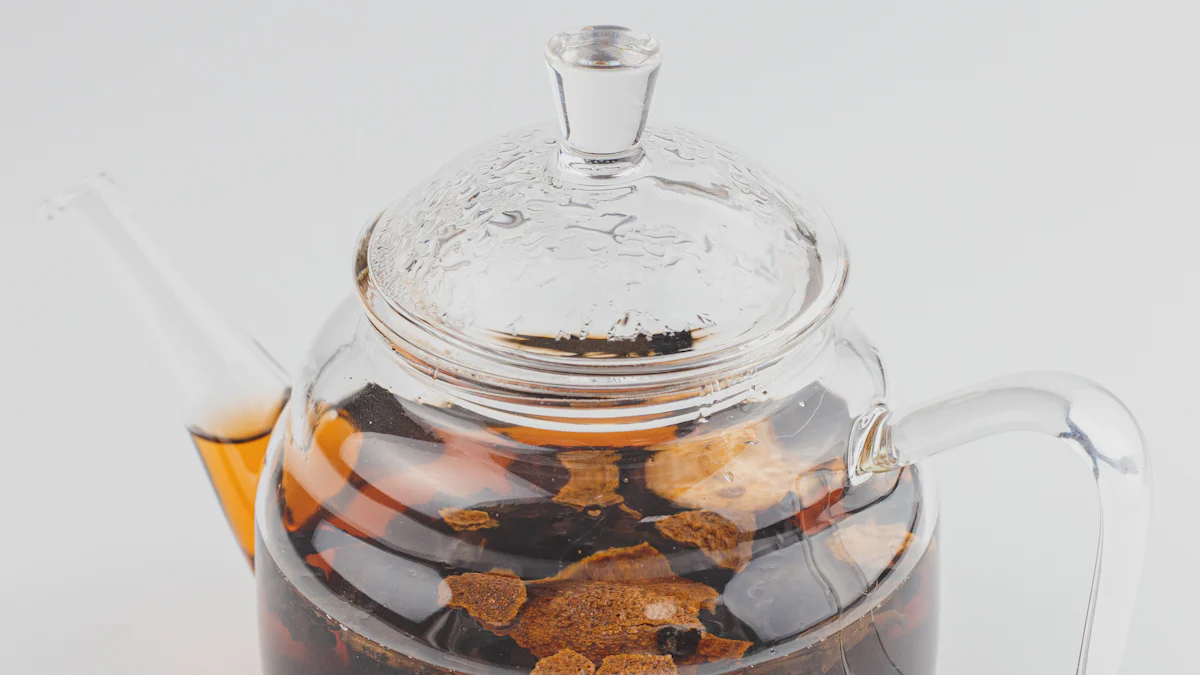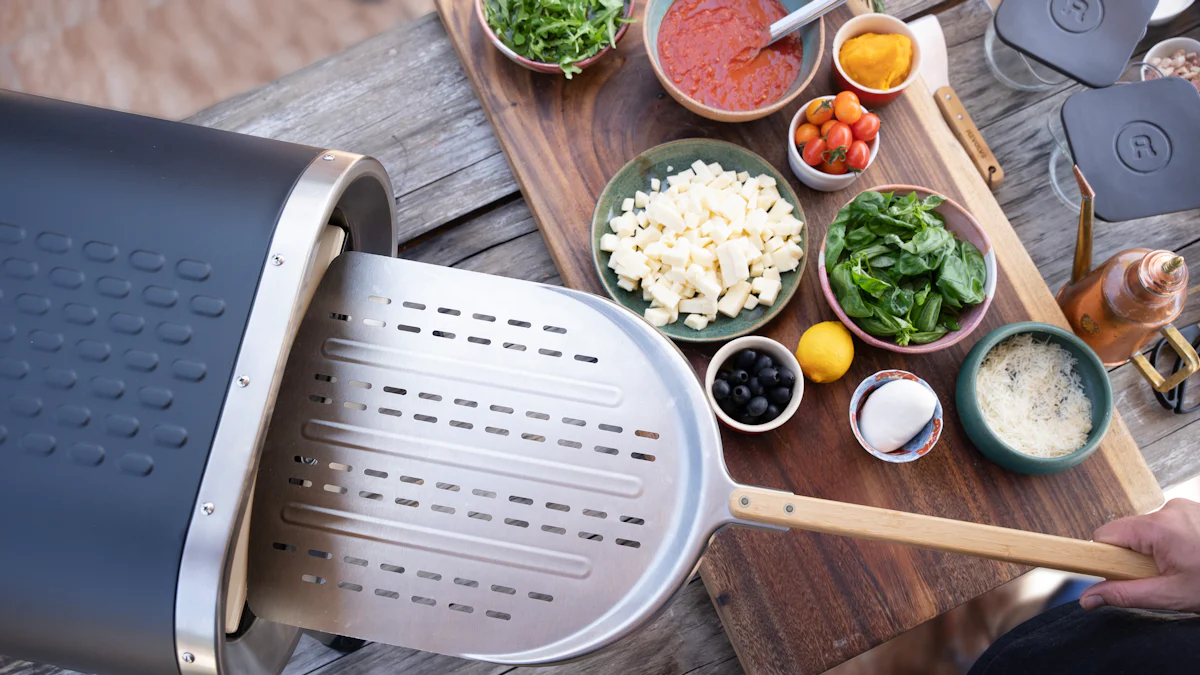Can you put glass in an air fryer
Ever wondered if you can use glass in a basket air fryer? Many people share this curiosity, and it's essential to understand the safety and practicality of this practice. Misconceptions abound, leading to confusion and potential hazards. Knowing the facts helps ensure safe and efficient cooking.
Understanding Air Fryers and Glassware

What is an Air Fryer?
Basic Functionality
An air fryer uses hot air to cook food. This appliance mimics the results of deep frying but without using oil. The hot air circulates around the food, creating a crispy layer. This method makes the cooking process healthier and more efficient.
Common Uses
People use air fryers for various cooking tasks. You can fry, bake, grill, and roast with this versatile appliance. Many folks love making fries, chicken wings, and even desserts in an air fryer. The compact size and quick cooking time make it a favorite in many kitchens.
Types of Glassware
Oven-Safe Glass
Oven-safe glass can withstand high temperatures. Manufacturers design this type of glass to handle the heat in ovens and air fryers. Pyrex is a popular brand known for its durable oven-safe glassware. This glass type resists thermal shock, making it safe for sudden temperature changes.
Regular Glass
Regular glass lacks the heat resistance of oven-safe glass. Using regular glass in an air fryer can be dangerous. The sudden temperature change can cause the glass to shatter. This risk makes regular glass unsuitable for high-heat cooking appliances.
Differences and Characteristics
Oven-safe glass and regular glass have distinct differences. Oven-safe glass often contains borosilicate or tempered glass. These materials provide durability and heat resistance. Regular glass, on the other hand, can break easily under high temperatures.
Oven-safe glass offers several benefits:
Resists thermal shock
Safe for high-heat cooking
Durable and long-lasting
Regular glass poses risks:
Susceptible to shattering
Unsafe for high temperatures
Not suitable for air fryers
Choosing the right glassware ensures safety and optimal cooking performance. Always check if the glassware is marked as oven-safe before using it in an air fryer.
Can You Put Glass in an Air Fryer?
Safety Considerations
Heat Resistance
Using glass in an air fryer requires understanding heat resistance. Oven-safe glass can handle high temperatures. This type of glass includes materials like borosilicate or tempered glass. These materials withstand the intense heat inside an air fryer. Regular glass, however, lacks this capability. High temperatures can cause regular glass to break. Always choose oven-safe glass for safe cooking.
Risk of Shattering
Shattering poses a significant risk when using glass in an air fryer. Tempered glass and borosilicate glass resist thermal shock. These materials can handle sudden temperature changes. Regular glass cannot. Sudden heat can cause regular glass to shatter. Shattered glass can harm you and ruin your meal. Always verify that your glassware is oven-safe before use.
Practicality and Performance
Cooking Efficiency
Glassware affects cooking efficiency in an air fryer. Oven-safe glass distributes heat evenly. This even distribution helps cook food thoroughly. However, glass can slow down cooking. The air circulation in an air fryer may not flow as freely around glass. This can extend cooking times compared to using metal or silicone.
Potential Benefits
Using glass in an air fryer offers several benefits:
Even Cooking: Glass provides consistent heat distribution.
Easy Cleaning: Glass is easy to clean and maintain.
No Rust: Unlike metal, glass does not rust over time.
These benefits make glass a popular choice for many home cooks.
Potential Drawbacks
Despite the benefits, glass has some drawbacks in an air fryer:
Slower Cooking: Glass can slow down the cooking process.
Risk of Shattering: Even oven-safe glass can shatter if mishandled.
Weight: Glass is heavier than other materials, making it harder to handle.
Considering these factors helps you decide if glass is the right choice for your basket air fryer.
Common Misconceptions
Myth: All Glass is the Same
Clarifying Different Types of Glass
Many people think all glass is the same. This belief can lead to dangerous mistakes in the kitchen. Oven-safe glass, like Pyrex, can handle high temperatures. Regular glass cannot. Borosilicate and tempered glass resist thermal shock. Regular glass does not. Always check if the glassware is marked as oven-safe before using it in an air fryer.
Myth: Air Fryers Work Like Ovens
Differences in Heating Mechanisms
Some folks believe air fryers work like ovens. This is not true. Air fryers use rapid air circulation to cook food. Ovens use radiant heat. The difference affects cooking times and methods. Air fryers cook food faster. Ovens provide more even heating. Understanding these differences helps you use each appliance correctly.
Practical Advice for Using Glass in an Air Fryer

Choosing the Right Glassware
Identifying Oven-Safe Glass
Always look for oven-safe glass when using a basket air fryer. Brands like Pyrex offer durable options that can handle high temperatures. Check for labels or markings that indicate the glass is oven-safe. Borosilicate and tempered glass are ideal choices. These materials resist thermal shock and won't shatter easily.
Avoiding Regular Glass
Avoid using regular glass in your air fryer. Regular glass can't withstand sudden temperature changes. The heat inside an air fryer can cause it to break. This poses a safety risk and can ruin your meal. Stick to oven-safe glass to ensure safe cooking.
Tips for Safe Use
Preheating Considerations
Preheat your air fryer before placing glassware inside. This helps the glass adjust to the temperature gradually. Sudden exposure to high heat can cause even oven-safe glass to crack. Preheating minimizes this risk and ensures even cooking.
Handling and Placement
Handle glassware carefully when using an air fryer. Use oven mitts to protect your hands from burns. Place the glassware in the center of the basket air fryer. This allows for better air circulation and more even cooking. Avoid overcrowding the basket to maintain optimal airflow.
Expert Tip: "When air frying, the temperature of the glass can get really high. Do not touch it. And if you have little children at home, buying a glass air fryer may not be a good idea." — Easier Life, Kitchen Appliances Expert
Following these tips ensures safe and efficient use of glass in your air fryer. Always prioritize safety and choose the right materials for the best cooking experience.
Alternative Options
Other Safe Materials
Metal
Metal stands out as a reliable option for air fryer use. Stainless steel and aluminum are common choices. These materials can handle high temperatures without any risk of shattering. Metal heats up quickly and evenly, which helps in cooking food faster. Cleaning metal is also straightforward. Just make sure to avoid any non-stick coatings that might not be safe for high heat.
Silicone
Silicone offers another safe alternative. This material is flexible and can withstand high temperatures. Silicone molds and mats work well in air fryers. They do not conduct heat as efficiently as metal, but they provide even cooking. Silicone is also easy to clean and store. The flexibility of silicone makes it convenient for various cooking tasks.
Pros and Cons of Alternatives
Comparison with Glass
Comparing metal, silicone, and glass reveals some key differences:
Heat Conductivity: Metal heats up quickly and cooks food faster. Glass provides even heat distribution but can slow down cooking. Silicone heats up slower but offers even cooking.
Safety: Metal and silicone do not shatter under high heat. Glass, even oven-safe, carries a risk of shattering if mishandled.
Cleaning: Glass and silicone are easier to clean compared to metal. Metal can rust over time if not properly maintained. Glass does not rust and remains durable.
Weight: Metal is generally lighter than glass. Silicone is the lightest among the three. Handling glass can be cumbersome due to its weight.
Versatility: Metal and silicone offer more versatility in terms of shapes and sizes. Glass is limited to specific types of dishes.
Choosing the right material depends on your cooking needs and preferences. Each material has its strengths and weaknesses. Understanding these can help you make an informed decision.
Summing up, using glass in an air fryer requires careful consideration. Always opt for oven-safe glass to avoid any mishaps. Safety and practicality should guide your choices. If unsure, consider alternatives like metal or silicone. These materials offer reliable performance without the risk of shattering.
Pro Tip: Preheat your air fryer before adding glassware to minimize thermal shock.
Feel free to share your experiences or ask questions in the comments. Your input can help others make informed decisions.
See Also
Is Pyrex Safe to Use in an Air Fryer
Avoid Using Plastic in Your Air Fryer
Is an Air Fryer a Substitute for an Oven?
